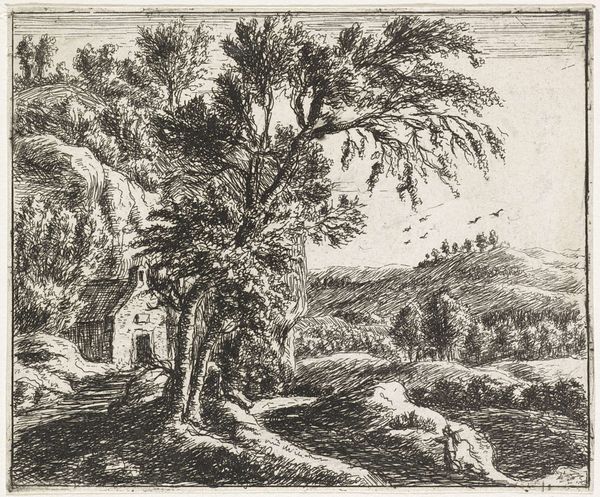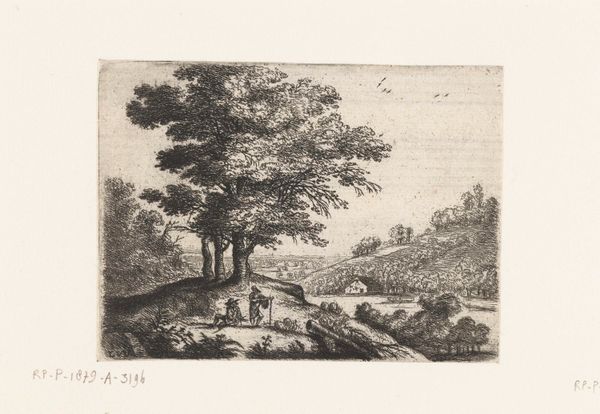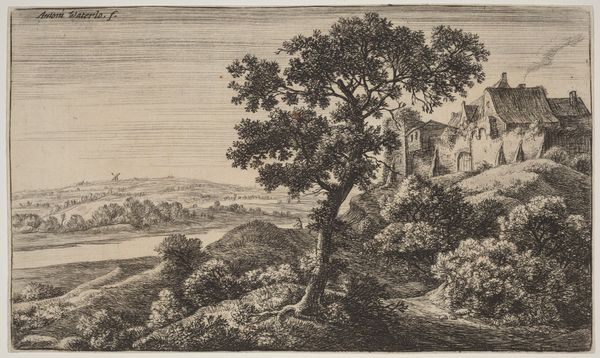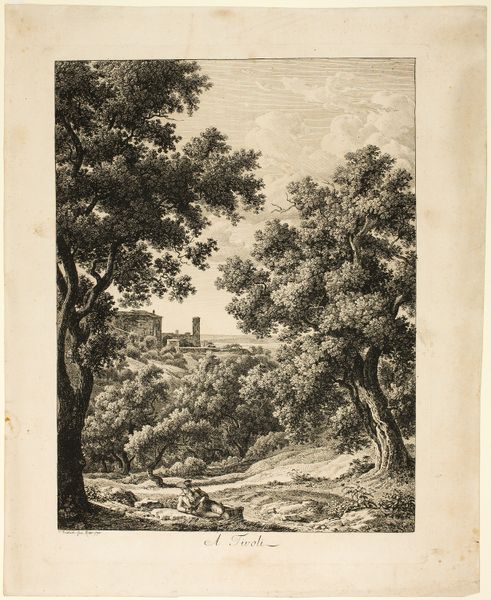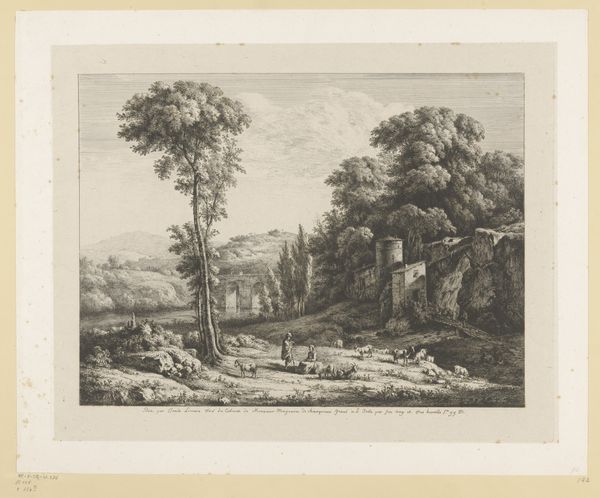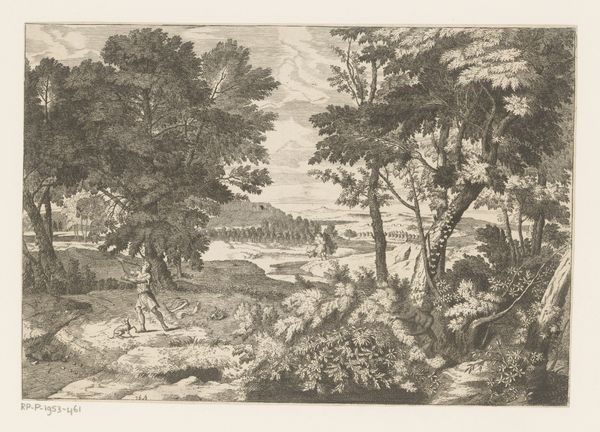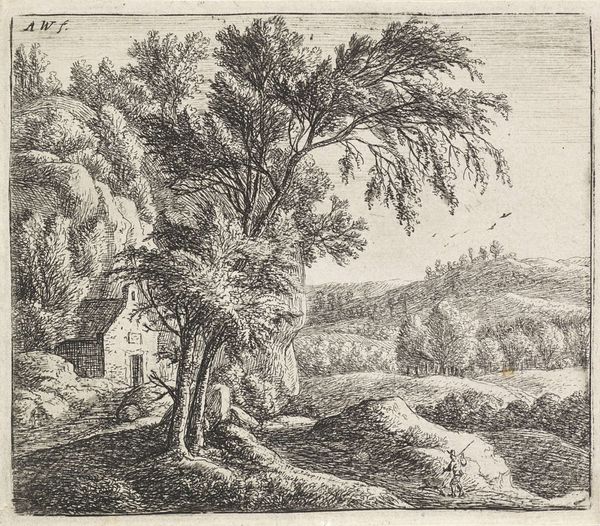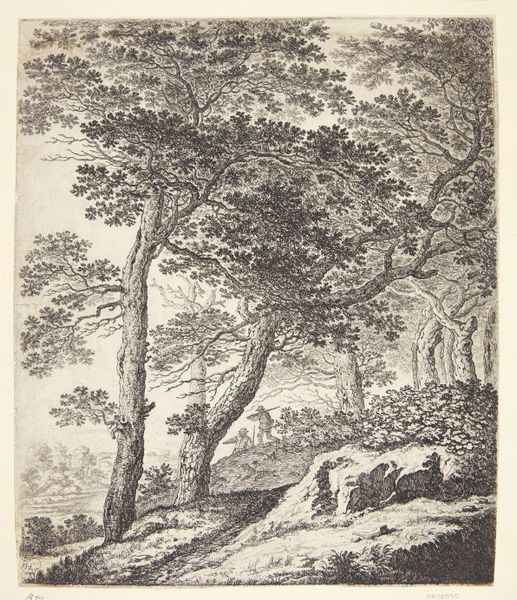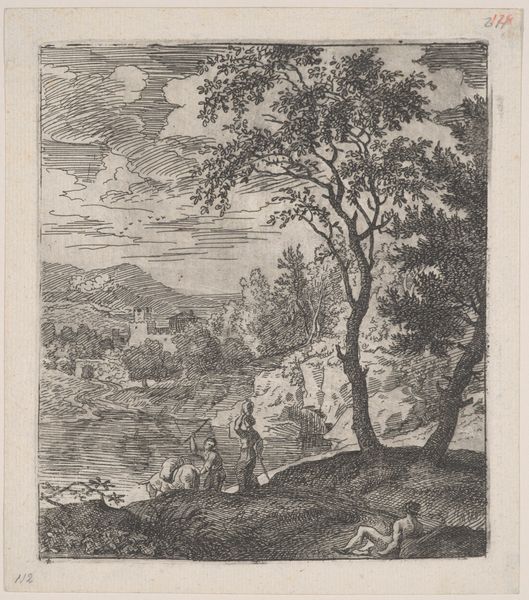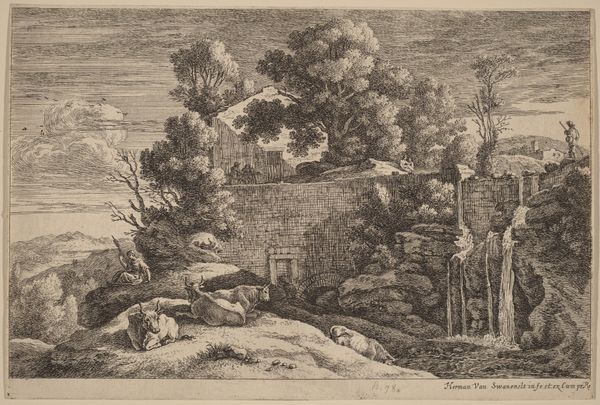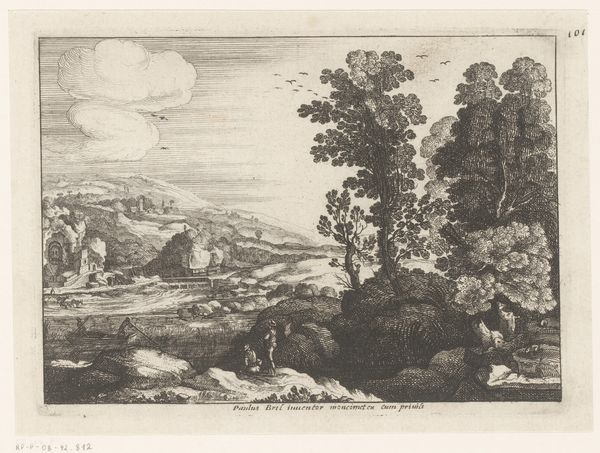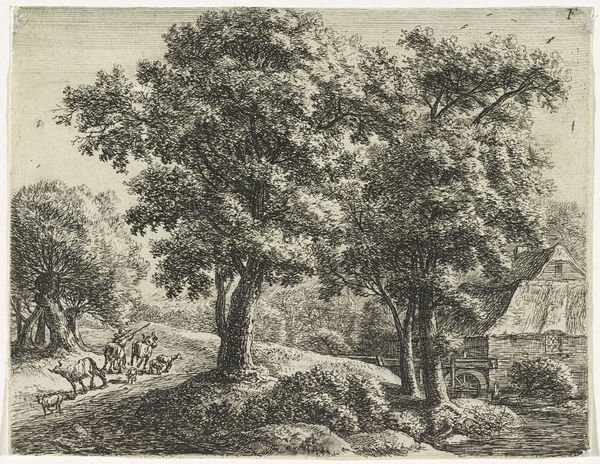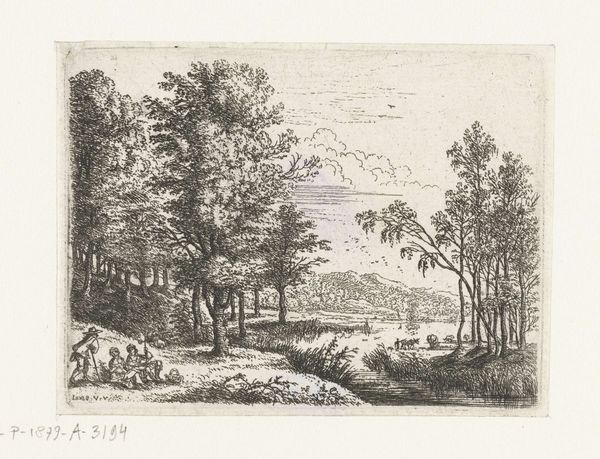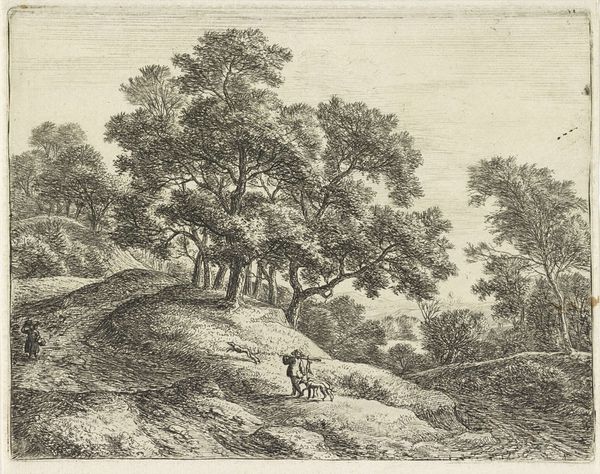
print, etching
#
dutch-golden-age
# print
#
etching
#
landscape
#
etching
Dimensions: 102 mm (height) x 116 mm (width) (plademaal)
Curator: I’m struck by the immediacy of this little scene. There’s a raw, almost stark quality to it. Editor: That's interesting. Let’s set the scene for our listeners. What we're looking at is Anthonie Waterloo's "Hytte i et landskab (eremitagen)," which translates to "Cottage in a Landscape (the Hermitage)." It's an etching dating from between 1610 and 1690. The work is at the SMK, the National Gallery of Denmark. Curator: An etching, yes. So the details are made by scratching into a treated plate. It has such a direct relationship to the hand of the artist, it brings them closer. Editor: Exactly. This particular etching speaks volumes about the evolving socio-economic structures in the Dutch Golden Age. Landscapes, like this one, became increasingly popular, reflecting a rising merchant class that celebrated individual ownership and the taming of nature. We’re not looking at a grand historical painting but rather at the intimacy of a small dwelling within a natural setting. Who might have lived here, and what did it mean to claim dominion over even a small piece of land? Curator: Interesting to see how a humble cottage is represented. Consider the actual labor involved in etching—the painstaking work to transfer the artist’s vision through a burin. How does it challenge the idea of landscape art being just about the scenic and sublime? Editor: It definitely blurs that line. And Waterloo's choice to focus on a simple structure complicates any romantic notion of untouched wilderness. Think of the historical context: the Netherlands were actively shaping their landscape through elaborate systems of dikes and canals. This etching subtly suggests that even supposedly ‘natural’ scenes were often human interventions, and are, to some extent, manufactured. Curator: That close engagement with craft emphasizes a different relationship between humans and landscape, moving away from ideals to the act of making a space. It shows a move from something idealistic and intangible to real production of something for profit or for shelter. Editor: Absolutely, it invites a conversation about identity, landscape and human intervention that speaks far beyond just aesthetic enjoyment. It asks questions. Curator: Exactly! This artwork becomes a tangible artefact not just of the artist’s labour, but of a broader cultural attitude towards landscape and ownership. That has been my point of entry into this artwork today. Editor: Thanks! It’s helped me reframe this tranquil etching as a snapshot of a society in transition, grappling with new relationships to land, labor and social identity.
Comments
No comments
Be the first to comment and join the conversation on the ultimate creative platform.
